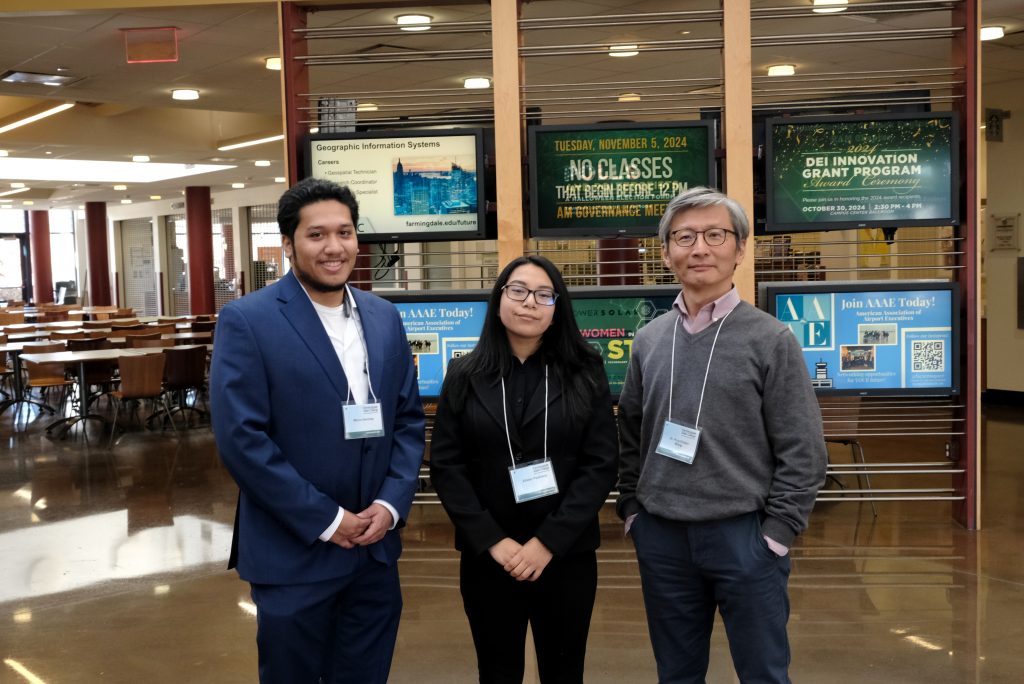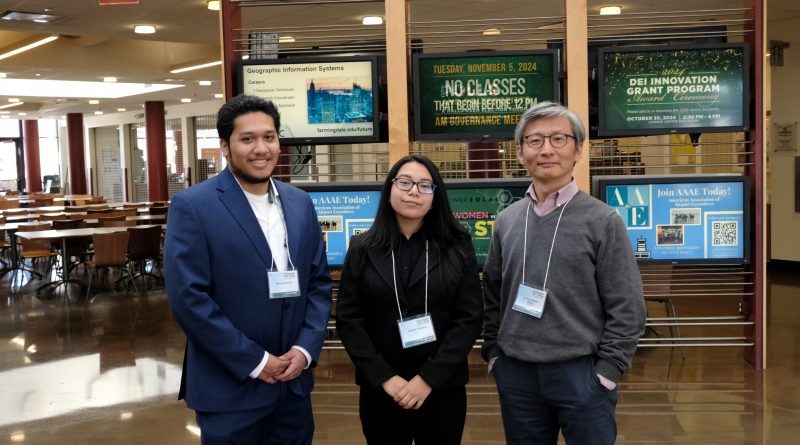AC² student-faculty collaboration presents pathway for more robust 3D printing

Six Mechanical Engineering students supported by SUNY New Paltz’s AC² Summer Research Program published a two-year long study for the American Society of Engineering Education (ASEE) on how 3D printing can pave the way for the future of manufacturing under the right conditions.
Marco Hermida ’25 (Mechanical Engineering), Aileen Pastrana ’26 (Mechanical Engineering), Bianca Bermudez ’25 (Mechanical Engineering), Shaima Herzallah ’25 (Mechanical Engineering), Christopher Monvil ’26 (Mechanical Engineering) and Tenmetey Tetteh-Nartey ’25 (Mechanical Engineering) worked with then Assistant Professor Ping-Chuan Wang and AC² Director Nancy Campos to test out, document and present how everyday products could be fabricated effectively using 3D printing technology.
“Since it’s more efficient to make complicated structures through 3D printing than through traditional manufacturing, this research was beneficial in knowing how a 3D printer can make things we use in our everyday lives with similar quality as a traditionally manufactured product,” said Hermida.
The biggest challenge in 3D-printing, a fabrication method by depositing materials layer-by-layer, is getting the printing conditions right to ensure mechanical integrity, due to the weak interfaces between printed layers. Yet, advancements in 3D printing or additive manufacturing technology are being made to overcome this issue and poise additive manufacturing as a sustainable alternative for high-volume production.
For two summers, students worked with Wang and Campos to overcome the challenges in improving the strength and reliability of 3D printed structures and to present the results to various communities.
“We wanted to map out the probability of failure with each printing condition,” said Hermida. “What we found is that properly aligning the printed layers creates the most optimal strength and reliability for mass production.”
Hermida and Pastrana then presented the research with Wang at the annual American Society for Engineering Education Mid-Atlantic fall 2024 Conference, which earned them the Best Paper Award. The team will head to Reading, Pennsylvania in March to accept the award at ASEE’s spring 2025 conference.
“It felt good to have that sense of achievement and recognition,” said Hermida. “At the conference, we met with professional engineers who seemed to respond well to our presentation, and this award validates our experience.”
The students had a resource right on campus to conduct their experimentation of 3D printing under different conditions. The Hudson Valley Additive Manufacturing Center was already a place familiar to them through Mechanical Engineering courses, but working there allowed them to understand the potential and opportunities of 3D printing technology.
“This was a big learning opportunity for me to expand on how I see 3D printing,” said Pastrana. “Outside of my classes, this was my first real-world experience in a lab, testing out and making 3D printed products.”
Making these opportunities possible for Pastrana and her peers is New Paltz’s AC² (AMP & CSTEP Community) Program, a resource that connects students from underrepresented backgrounds with academic and professional opportunities in science, technology, engineering and mathematics.
“They’re always encouraging you to apply for internships and take part in opportunities you may have not otherwise known about,” said Pastrana. “All the opportunities I’ve had are because of the work they do to uplift minority communities.”
To learn more about AC², follow them on Instagram @ampcstepnp.

